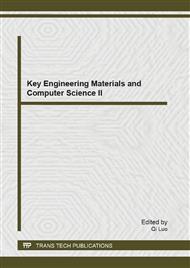p.573
p.579
p.585
p.588
p.592
p.598
p.603
p.608
p.613
Development of Exoskeleton Suit for Rehabilitation
Abstract:
This paper introduced the rehabilitation for leg lower limp with exoskeleton suit. The rehabilitation is mainly classified in three modes, which are active, passive and active - assistive mode. In active mode, it provides appropriate resistance to the muscles to increase endurance and strength, because the patients must lift leg lower limp by their effort. In passive mode, patients cannot participate in process of rehabilitation and no effort is required, because patients leg lower limb will be driven by exoskeleton suit. In the last active-assistive mode is the combination of active and passive mode for patients, who has capability to move their joints but not reached the desired level. The control algorithm is designed to achieve rehabilitation modes by using classical PID controller.
Info:
Periodical:
Pages:
592-597
Citation:
Online since:
July 2013
Authors:
Keywords:
Price:
Сopyright:
© 2013 Trans Tech Publications Ltd. All Rights Reserved
Share:
Citation:


